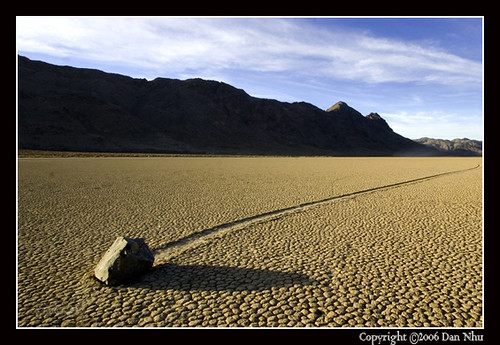
“The wind goeth toward the south, and turneth about unto the north,” the Old Testament’s Book of Ecclesiates reports. “It whirtleth about continually, and the wind returneth again according to his circuits.” This forecast is still accurate, but what exactly, uh, driveth the wind, one of nature’s most essential, if unseen, forces? The circulation of air is powered by the same source from which all earthly energy comes, either directly or indirectly: the sun.
As the sun’s warming rays fall upon the earth, the air doesn’t toast evenly; the equator receives more direct, concentrated rays than do the poles, so temperature around the equatorial belt are higher. This mass of warmer air responds by expanding and floating upward. Since the expanding air is thinner than the surrounding atmosphere, as it rises, there’s less of it near the ground, causing a local drop in air pressure. Because nature abhors a vacuum, nearby masses of cooler, denser air (which is necessarily under higher pressure) rush in to fill the empty spaces.
This movement of the air is the wind. Its direction is determined by the relative positions of the high and low pressure zones, and its speed is a function of the difference in pressures. Although the temperature gap between the equator and the poles is one of the primary drivers of our planet’s wind, there are others: land and water absorb and hold the sun’s heat at different rates, as do various kinds of terra firma. All of these asymmetries lead to local differences in air temperature, which are registered in the behavior of the wind.
The wind helps shape life on the earth and even shapes the planet itself: moving air ferries particles of soil (and seeds) great distances (sometimes even across oceans or continents), carries both the water (vapor) that gives life and the microbes that sometimes take it away, causes clouds (and most other weather related phenomenon) to form and actually sculpts the ground, eroding solid rock over thousands of years. So familiar is the wind that local gust have been christened with there own names, from A to Z: the Abroholos is a summer squall off the coast of Brazil, while Zephyr is the ancient greek name for the West Wind.
Winds can even speed up or slow down the planet’s rotation. El Nino storms and other strong winds that blow counter to the planet’s spin can exert enough frictional drag on its surface to produce a small but measurable decrease in its speed of rotation, thus lengthening each day ever so slightly. Winters with strong westerly winds in the northern hemisphere (which puff in tandem with the earth’s spin) produce a minute increase in the world’s twirl, thus shortening each day by a few thousandths of a second.
The whirling globe, in turn, can drive the winds: the Coriolis force created by the earth’s spin makes prevailing winds blow from west to east in the northern hemisphere and from east to west in the southern. It also causes hurricanes to spin counterclockwise above the equator and clockwise below.
Much of our knowledge of wind is recent. Jet streams, the ribbons of high-altitude wind that gust around the globe at speeds of up to 250 mph, were first observed by amateur meteorologist Clement Ley in the 1880s and were not actually encountered until the 1930s, when pioneering aviator Wiley Post took a small plane up about 40000 ft and found himself clipping at twice the speed his engine could produce. These streams play a key role in shaping our planet’s climate. The more we learn about this potent but invisible force, the more the ancient Greeks seem to have had the right description for it: wind, they claimed, is the breath of the Gods.










No comments:
Post a Comment